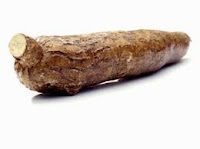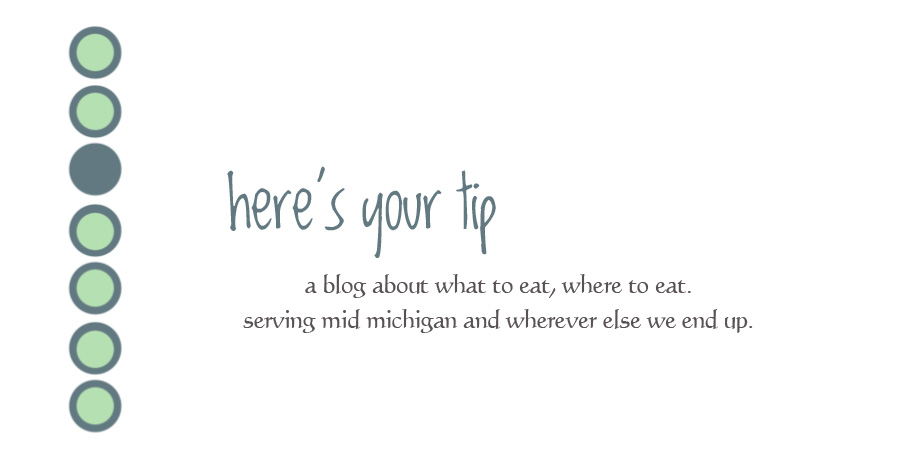Ok, so here is a lazy post. This IS NOT my work, but I thought it was interesting enough to share with you. The original can be found here: http://www.huffingtonpost.com/the-daily-meal/21-deadly-dishes_b_811345.html#s226528&title=Namibian_Bullfrog
Believe it or not, apples, the same fruit that's supposed to keep the doctor away might actually send you to the hospital. Turns out, apple seeds contain cyanide, which can cause stomach agitation and vomiting. Okay, so the seed casings are extremely tough -- there's little risk unless they're pulverized, or chewed up. Even then, you'd need to eat a lot for it to be fatal.
But there are other components to common foods that could have painful, even deadly effects. Here are eleven pretty common foods that could kill you, followed by some more exotic deadly dinners.
Cherries
What could hurt you: Like apples, cherries contain a type of hydrogen cyanide called prussic acid.
How much can kill you: Don't go eating a cup of ground pits, or peach and apricot pits for that matter.
Rhubarb 
What could hurt you: Rhubarb leaves contain oxalic acid, which causes kidney stones.
How much can kill you: It'll take 11 pounds of leaves to be fatal, but much less to make you seriously ill.
Nutmeg 
What could hurt you: Nutmeg is actually a hallucinogenic.
How much can kill you: Yes, you can trip on it, but it's said that eating just 0.2 oz of nutmeg could lead to convulsions, and 0.3 oz could lead to seizures. Eating one whole will supposedly lead to a type of "nutmeg psychosis", which includes a sense of impending doom.
Potatoes
What could hurt you: Glycoalkaloids, also found in nightshade, can be found in the leaves, stems, and sprouts of potatoes. It can also build up in the potato if it's left too long, especially in the light. Eating glycoalkaloids will lead to cramping, diarrhea, confused headaches, or even coma and death.
How much could kill you: It's said that just 3 to 6 mg per kilogram of body weight could be fatal. Avoid potatoes with a greenish tinge.
Almonds 
What could hurt you: There are two variations of almonds, sweet almonds and bitter almonds. The bitter ones supposedly contain relatively large amounts of hydrogen cyanide.
How much could kill you: It's said that even eating just 7 - 10 raw bitter almonds can cause problems for adults, and could be fatal for children.
Unpasteurized Honey 
What could hurt you: Because it doesn't go through the pasteurization process in which harmful toxins are killed, unpasteurized honey often contains grayanotoxin. That can lead to dizziness, weakness, excessive sweating, nausea, and vomiting that last for 24 hours.
How much could kill you: Typically just one tablespoon of concentrated grayanotoxin can cause the symptoms above. Consuming multiple tablespoons would be a bad idea.
Tomatoes
What could hurt you: The stems and leaves of tomatoes contain alkali poisons that can cause stomach agitation. Unripe green tomatoes have been said to have the same effect.
How much could kill you: You would need to consume vast quantities for it to be fatal. Not exactly high-risk, but you might avoid eating tomato leaves.
Tuna
What could hurt you: The danger in tuna is the mercury that the fish absorbs. Once in your body, mercury will either pass through your kidneys, or travel to your brain and supposedly drive you insane.
How much could kill you: The FDA recommends children and pregnant women do not consume tuna at all. While it's unlikely that eating a massive amount of tuna in one sitting will kill you, it's a good idea to monitor your weekly intake.
Cassava
What could hurt you: If not prepared correctly, or eaten raw, it turns into hydrogen cyanide.
How much could kill you: There are two variations: bitter and sweet. The sweet variety is 50 times less harmful, packing only 20 mg of cyanide per kg of fresh root. Still, twice is supposedly enough to kill a cow.
Cashews 
What could hurt you: Raw cashews you might find in a supermarket are not actually raw, as they've been steamed to remove the urushiol, a chemical also found in poison ivy. This chemical can cause the same effect as poison ivy, or poison oak.
How much could kill you: High levels of urushiol can supposedly prove fatal. People who are allergic to poison ivy are likely to have a fatal allergic reaction to eating actual raw cashews.
Elderberries 
What could hurt you: These berries are often used in jams, jellies, and wines. Their leaves, twigs, and seeds contain cyanide-producing glycoside. Nausea, vomiting, diarrhea, and coma are the symptoms to look forward to.
How much could kill you: Suffice it to say, hope your herbal tea was prepared correctly, and that whoever made your jam or wine strained the fruit. Also, never eat them unripe.
Namibian Bullfrog
Ackee Fruit

If picked before its time, eating ackee can lead to Jamaican vomiting sickness. It contains hypoglycin A, which limits the body's ability to release glucose from the liver, a process essential to keeping blood and sugar levels stable between meals. The inhibition of this process can lead to hypoglycemia, causing dehydration, seizures, coma, and death. Fun, huh?
Star Fruit

Just 100 ml of this fruit's juice is poisonous for people with bad kidneys -- it contains neurotoxins that affect the brain and nerves. If you have healthy kidneys, have no fear. Your body will be able to filter out the neurotoxins.
Pangium Edule

Pangium edule, the fruit from a tree native to Southeast Asia, is poisonous to humans due to the hydrogen cyanide it contains.(It's known as "the fruit that nauseates.") The seeds are eaten after either being boiled without their shells and soaked in water, or after boiling and burying them in banana leaves and ash for a month or two to release the cyanide.
Casu Marzu

This cheese from Northern Italy has a special ingredient. No, not a special herb. It's Piophila casi, the "cheese fly," which lays thousands of eggs in this sheep's milk cheese. Casu marzu is served with the maggots alive, as once they die the cheese becomes toxic. Diners are encouraged to brush off the maggots before eating the cheese, given the larvae can survive human digestive tracts long enough to lay eggs. Hatching maggots then try to burrow through intestinal walls, causing pain, vomiting, and death. Not likely to put you in the mood for dessert.
Silver Stripe Blaasop

Although a delicacy in some ports of the Indian Ocean, the liver, skin, and reproductive organs of the Silver Stripe Blaasop supposedly contain a poisonous substance that can cause fatal muscle paralysis and breathing and circulation problems if eaten by humans.
Echizen Kurage

This poisonous jellyfish lives on tuna, problematic for the Japanese tuna supply. The solution? Make the jellyfish into a delicacy. The toxic parts must be removed, and the jellyfish cooked so as to be eaten without risk.
Blowfish (Fugu)

The liver, muscles, ovaries, and skin of the blowfish are full of a poison called Tetrodotoxin, a poison 1,200 times more poisonous than cyanide. If not cooked correctly, it will kill a diner within four to six hours of consumption. Chefs must undergo three years of training before being allowed to prepare blowfish.
Hakarl

Greenland shark is used to make this Icelandic delicacy, which is translated as "fermented shark." This species of shark has no urinary tract, meaning the meat is full of toxic substances like trimethylamine oxide. To remove the toxins, the sharks are buried in a sand and gravel pit to remove moisture, then fermented, and cut into strips before being hung to dry. The process takes about six months -- and the end product smells like it. If you try it, you better multitask -- fork in one hand, nose plugged with the other.
Sannakji

Those tentacles are still squirming. That's right, this dish is served alive. A delicacy in Korea, Sannakji (baby octopus) is cut up and served while it's still writhing. Diners must take care to chew with vigor because the suction cups on the tentacles are still very functional. They will stick to your mouth and throat if not properly chewed, putting you at risk for a clogged airway. There are rumors of multiple deaths by choking due to Sannakji in Korea last year.
So it seems there really can be too much of a good thing. And while none of the foods above may be fatal in reasonable doses, there are plenty of dishes that can be deadly if not prepared properly.



